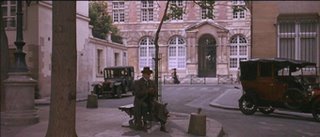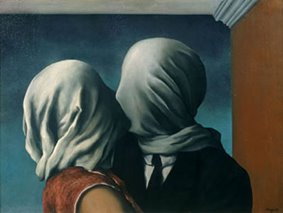 Khajuraho Temple, India (c. 9-10th C. AD)
Khajuraho Temple, India (c. 9-10th C. AD)"Women still remember the first kiss after men have forgotten the last." Remy de Gourmont

Bronzino - Venus, Cupid and Time (1545)"A kiss is a lovely trick designed by nature to stop speech when words become superfluous." Ingrid Bergman

Kitagawa Utamaro - Lovers (1788)"A man who can drive safely while kissing a pretty girl is simply not giving the kiss the attention it deserves." Albert Einstein

Jean Fragonard - Stolen Kiss (c. 1788)"That farewell kiss which resembles greeting, that last glance of love which becomes the sharpest pang of sorrow." George Eliot

Edvard Munch - Kiss (1895)"May I kiss you then? On this miserable paper? I might as well open the window and kiss the night air!" Franz Kafka

Auguste Rodin - The Kiss (1896)"The sound of a kiss is not so loud as that of a cannon, but its echo lasts a great deal longer." Oliver Wendell Holmes

Gustav Klimt - The Kiss (1907-8)"Hollywood is a place where they'll pay you a thousand dollars for a kiss and fifty cents for your soul." Marilyn Monroe

Max Ernst - Une Semaine de Bonte (1934)"A compliment is something like a kiss through a veil." Victor Hugo

Roy Lichtenstein - Kiss V (1964)"Before you find your prince, you have to kiss a lot of frogs." Anon

Amelie - d. Jean-Pierre Jeunet (2001)Kiss (lyrics) by
PrinceU don’t have 2 be beautiful
2 turn me on
I just need your body baby
From dusk till dawn
U don’t need experience
2 turn me out
U just leave it all up 2 me
I’m gonna show u what it’s all about
U don’t have 2 be rich
2 be my girl
U don’t have 2 be cool
2 rule my world
Ain’t no particular sign I’m more compatible with
I just want your extra time and your
Kiss
U got to not talk dirty, baby
If u wanna impress me
U can’t be 2 flirty, mama
I know how 2 undress me (yeah)
I want 2 be your fantasy
Maybe u could be mine
U just leave it all up to me
We could have a good time
U don’t have 2 be rich
2 be my girl
U don’t have 2 be cool
2 rule my world
Ain’t no particular sign I’m more compatible with
I just want your extra time and your
Kiss
Yes
I think I wanna dance
Gotta, gotta
Little girl wendy’s parade
Gotta, gotta, gotta
Women not girls rule my world
I said they rule my world
Act your age, mama (not your shoe size)
Not your shoe size
Maybe we could do the twirl
U don’t have 2 watch dynasty
2 have an attitude
U just leave it all up 2 me
My love will be your food
Yeah
U don’t have 2 be rich
2 be my girl
U don’t have 2 be cool
2 rule my world
Ain’t no particular sign I’m more compatible with
I just want your extra time and your
Kiss












































